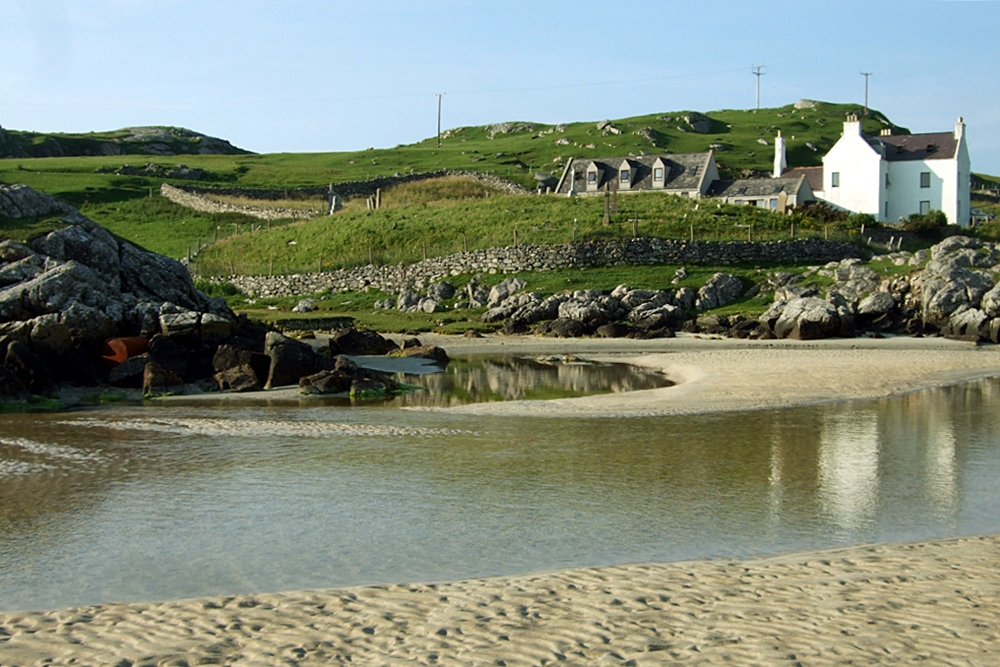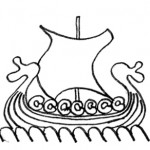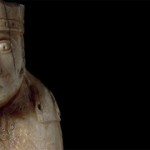Category: Vikings
Uig in Old Norse
The Chessmen in New York
Replica Viking ship to be built in Norway
Murchadh Ban
The Chessmen in the History of the World
The Chessmen Talk (not literally)
Mealista v. Ardroil
By long and solid tradition in Uig, the spot where the Uig Chessmen were found in 1831 is held to be the Bealach Ban, a hollow in the dunes in Ardroil. In November of last year, a paper by Dr David Caldwell et al in Mediæval Archaeology proposed that, on the evidence of the Ordnance Survey Place Names book compiled by contractors from local information in the 1850s, the findspot may have been a few miles away at Mealista. Anna Mackinnon, Ardroil, wrote an initial response countering that suggestion and gives more evidence from the Place Names book here. This piece appeared earlier this month in the Uig News; thanks to Anna and the Uig News for the opportunity to republish it. Meanwhile Dr Caldwell will be speaking in Uig about the Chessmen on Thursday 4 March. Further detail will follow.
Over the last few weeks, I’ve been delving into the book of place names collected by the very first Ordnance Survey of the 1850s to find out for myself what’s actually there and to work out how much import can be given to the entry that states that the Chessmen were found in Mealista, in the ruins of Taigh nan Cailleachan Dubha. The Place Names book is easily accessible, on microfiche in the Stornoway Library.
I have to say that it’s an example of meticulous paperwork, a colossal amount of painstaking effort must have gone into its compilation but to the 21st century eye, it looks fussy and overdone. It’s handwritten and ruled out in column after column: place name; its correct spelling; any other known variation of the spelling; the location; the English “significance” i.e. translation of the name; the names of the person or persons who were the authorities for the information and of the Ordnance Survey Clerks who wrote it all down and, finally, a column for comments.
We used to be advised as students not to use it as a reliable source as the information was only as good as the knowledge of the informant and also, because its accuracy could have been compromised in translation. There’s a long time since I last looked at it and this time round, I found its main impact, apart from its painstaking “clerkery,” was the sheer volume of place names in the parish of Uig. Going through the pages nearer home, I felt as if I was meeting old friends as place names jumped out at me from the screen, names I used to hear in daily conversation, which are now rarely, if ever, aired.
I was also intrigued by the names of the local informants of the 1850s. I would really like to go back to it and list them all down to see how many can be identified with the help of the census returns. I found my great, great grandfather, Murdo Macleod, Gisla, (Murchadh Ghioslaigh) and his neighbour and brother-in-law, John Macdonald, (Iain Laghach) reeling off names. That pinpoints the collecting of place names to before 1853 and the Gisla clearance, after which all the Laghach family but two ended up in Quebec.
From memory, I was sure that the Chessmen were noted in the pages relating to the Ardroil area although the name Ardroil wasn’t in use in its present form as early as the 1850s. The farm was known initially by variations of Eadar Dha Fhadhail, such as Ederol. The entry about Chessmen is there, under the place name “Bealach Ban.” It reads, “A glen on the south side of Camus Uig, it is composed of sand. A few years back a number of carved Ivory images of horses, sheep and other animals were found in this glen. Signifies white glen or pass.”
What’s Really Known About the Chessmen Findspot
New Theories on the Uig Chessmen
The King Earns his Keep
Why You Should Never Laugh at a Berserker
Talk: Dr Mary Macleod on Vikings, Fri 30 Jan
The Legend of Thorgunna, a Hebridean Norsewoman
Prehistoric Graves Found in Uig
Vikings & Norse Archaeology in the North Atlantic
Theories about the Cave of Swords
A mysterious cave full of swords was once discovered on Mealisval, but the could not be found again. Dave Roberts gave the story of the discovery of the cave in an article for Uig News and here gives a range of possible explanations.
In the Iron Age (2000 years ago) people often deposited weapons made of bronze or iron into water. They also built and used underground passage ways – thought by some to have been routes to the ‘underworld’. In Orkney there are a number of manmade shafts with steps that lead downwards into the ground. Some of these have water in, and could have been wells, but others have no permanent water in the bottom. Could the Mealaisbhal cave with its staircase, be an Iron Age route to the underworld, and were the swords an offering to the gods?
Other people have suggested that the swords are more recent than that. Perhaps they have a connection to a famous and desperate fugitive from justice, who lived in the Uig hills in the mid-nineteenth century. In the stories, Mac an t-Sronaich was supposed to be a very violent man who threatened, accosted and even murdered people. The official records however suggest that this was a gross distortion of the truth. Did he have an arsenal of weapons hidden in a cave? He is reputedly associated with just about every cave in Uig, and many much further afield. Many of the tales about him describe his aggression, but none make any reference to swords.
A much more convincing theory is that the cave was a hiding place in the period immediately after 16th April 1746. In the aftermath of Culloden, and the defeat of the Jacobite army under the command of Charles Edward Stuart – everything ‘Highland’ became forbidden. This included the wearing of the kilt and the bearing of arms. Many of the people hid their now illegal weapons wherever they could. Some secreted claymores in the thatch of their houses. Maybe the Uig upper-enders hid theirs in a cave on Mealaisbhal. Their weapons would have been totally undetectable, but quickly and easily accessible if the need arose.
Viking Age Triggered by a Shortage of Wives?
Hnefatafl
The Viking Princess and the Seeing Stone

Lewis tradition maintains that the Brahan Seer was born in Uig, in the vicinity of Baile na Cille, and that his powers of second sight came from a seeing stone he found there. Dolly Doctor gives the following account in Tales and Traditions, based on the version told in the Uig ceilidh-houses:
Kenneth’s mother was watching the flocks by night, and as she sat on Cnoc Eothail, which looks down on the ancient mound [the cemetery at Baile na Cille] and commands a wide view of sea and moorland and mountain, she occupied her time by spinning with her distaff and spindle. As she watched her flock, looking over the graveyard, she saw the graves open and the ancient mound became thronged with a great concourse of spirits. Then one and all sallied into the stilly night in all directions. Before cock-crow the spirits returned, fluttering into their own places, and then she noticed one grave was still open. The old lady decided to watch for the late-comer and put her distaff across the open grave, and at last she saw the spirit approaching from the ocean regions to the north. In a moment a vision of beauty stood before her, and a young woman, graceful as a fawn, ‘golden-haired and fair as the young morn’, entreated the old lady to allow her entrance. She refused to do so unless the spirit would tell her who she was and where she had been.




